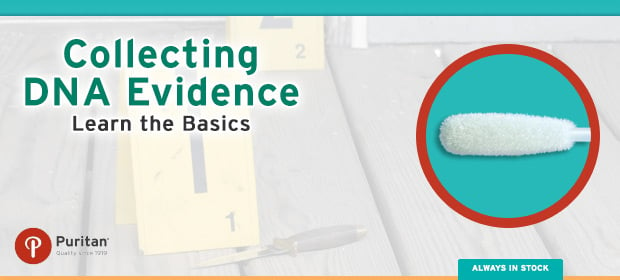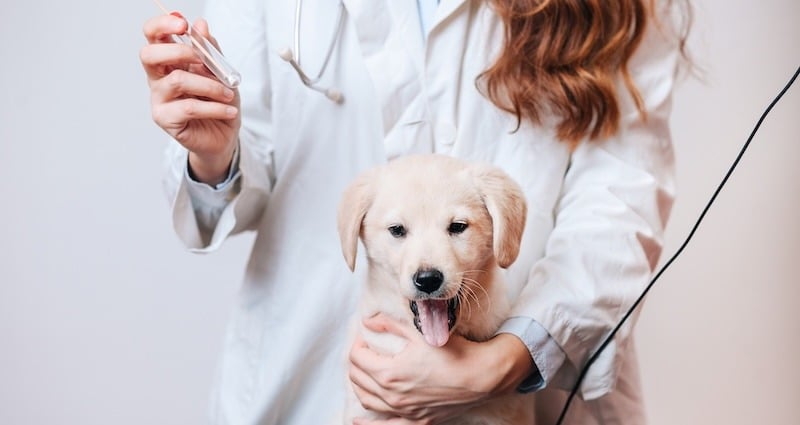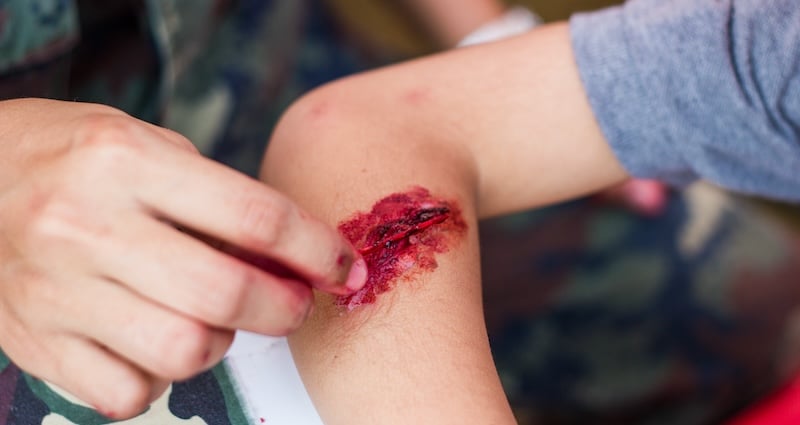
Deoxyribonucleic acid, otherwise known as DNA, is the essential structure of the genetic makeup of all living things.
In this article, we review the basics of DNA evidence collection, how to swab for DNA, and how to avoid contamination.
DNA Evidence Collection - Learn the Basics
For forensic scientists, crime scene investigators, and medical examiners, proper DNA specimen collection technique is a necessary skill. A DNA sample can be collected from a number of different sources. Items found at a crime scene which may not have been involved in the actual crime, could potentially be a source of DNA evidence.
In the world of law enforcement, the collection of DNA evidence has become a powerful tool in solving investigations, due to the simple fact that each human’s DNA is entirely unique (with the exception of identical twins).
What is a DNA Sample?
A DNA sample represents the collection of an individual's (or multiple individuals') deoxyribonucleic acid using a sterile swab while following proper collection tactics.
A sample of DNA is capable of doing anything from identifying human remains, catching malefactors, to exonerating individuals who have wrongfully been convicted. The practice of DNA collection from convicted criminals and the formation of a database to record their DNA began in the 90’s and has since become an integral part of police investigations.
At a crime scene, both biological evidence such as blood, and physical evidence like a weapon, could potentially yield DNA samples that will offer insight into the case. While evidence like blood or a weapon is easy to identify, DNA can also be completely invisible to the naked eye, for example if a person touched an object or weapon, skin cells or other forms of Touch DNA might have been left behind. For these reasons, it has become standard practice for crime scene investigators to thoroughly inspect and collect as much as possible from the crime scene.
How does DNA evidence work? Read more.
How to Collect DNA Evidence With a Swab
In an instance where the crime scene offers a clear source of DNA (blood, urine, saliva, and samples on steering wheels, etc.), the sample can be collected using a swab.
-
After putting on protective gloves, remove the swab from its wrapper, taking precautions to touch only the handle.
-
If the sample is dry, pre-moisten the swab tip with sterile distilled water. Place the tip of the swab on the surface, rotating slightly to allow any DNA to absorb into the fibers.
-
Allow the sample to air dry by placing the swab tip-first into the proper packaging and label. Once the swab is in the packaging, this can be placed inside an envelope or paper form. Keep the sample refrigerated until returning to the lab.
-
Note: all other hazardous material should be placed and labeled in separated bags.
How to Avoid DNA Evidence Contamination
It is important for investigators and lab personnel to wear the proper personal protective equipment, use clean instruments, and avoid interacting with other objects when handling all biological evidence for DNA testing to reduce the risk of compromising any evidence.
Evidence should be allowed to air dry prior to packaging in an evidence bag or envelope. As with any evidence collection procedures, the officer should always ensure that the chain of custody is maintained. It is extremely important to remember that DNA can easily be damaged even when it has been properly collected and packaged. Damage to DNA can occur from improper storage, exposure to direct sunlight, or simply by becoming too warm. To prevent damage, keep collected evidence in a dry and cool place, then get it to the lab as soon as possible.
For more on DNA evidence contamination, check out this article.
What Are Sources of DNA That You Can Swab?
There are several common sources of DNA that you can easily swab for. These include blood, feces, urine, semen, saliva, hair, teeth, bone, and tissue. DNA can also be collected from a variety of surfaces and materials.
Where Can DNA Samples Be Taken From?
DNA samples can be taken from drinking glasses, cigarette butts, food with bite marks, bite marks on the skin, and more. You can also swab commonly-touched surfaces, such as computer keyboards, door knobs, steering wheels, eyeglasses, and countertops.
DNA: The Most Powerful Evidence
For even the most experienced crime scene investigators, it’s possible to still end up with compromised DNA. This happens when DNA has already been affected at the crime scene prior to collection by one or several environmental factors including temperature, sun exposure, bacteria, mold, and weather. Even if a crime scene appears to have been compromised by one or more of these factors, it’s still just as important to follow proper DNA collection procedures in order to maximize the chance of recovering usable evidence.
Using today’s advanced technologies, it’s more possible than ever before to solve crimes using DNA evidence collected from crime scenes. The combination of proper DNA collection, handling, packaging and transport, paired with the high-tech forensics that follow in the lab can result in solid evidence that will hold up in court. If correct procedures are followed, even nearly invisible evidence like skin cells and saliva could be the key to solving a murder.





